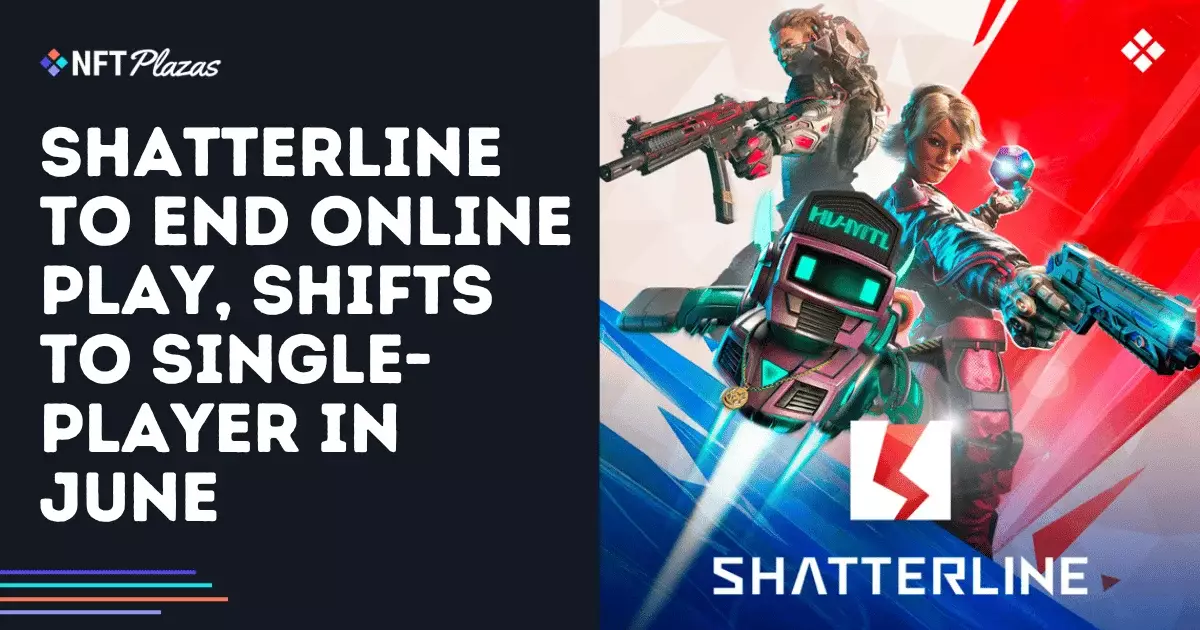Shatterline, a sci-fi first-person shooter that aimed to redefine the online multiplayer landscape, has abruptly pivoted to a pay-to-own model, stripping away its original multiplayer features in favor of a single-player experience. This drastic change begs us to reflect on the evolving dynamics of the gaming industry, particularly the implications when developers abandon their original vision. This transition underscores a fundamental struggle that many developers face in today’s market: maintaining player engagement in an environment increasingly dominated by “live-service” models.
The reality for Shatterline began to unravel soon after its early access release in 2022, sparking excitement among gamers. Designed as a free-to-play platform, it sought to draw players into its expansive universe. Instead, the studio, Frag Lab, has now cited a dwindling player base as the primary reason for shutting down online multiplayer servers. The ambitious notion of sustained multiplayer gameplay crumbled under the weight of reality—an unimpressive daily active user count hindered any semblance of proper matchmaking, making the multiplayer dream an unsustainable endeavor.
Challenges in Monetization and Player Retention
The issues plaguing Shatterline extend beyond simple player engagement; they uncover a deeper malaise within the industry. Frag Lab faced significant hurdles monetizing a game that struggled to entice players. Many in-game purchases went largely unutilized as the core audience dwindled. This trend raises important questions: Is the free-to-play model inherently flawed? In an age where players are bombarded with options, the struggle to stand out and retain user interest has never been more pronounced.
Indeed, player skepticism regarding in-game blockchain elements further complicated Shatterline’s fate. Although web3 integrations hold potential, they must be seamlessly integrated to enhance—rather than disrupt—the gaming experience. The criticism that these elements misalign with player needs is not only valid but also a cautionary tale for developers considering similar paths. Their execution matters, and a poorly woven blockchain narrative can alienate players, just as it did for Shatterline.
Looking Ahead: Can Single-Player Save the Day?
As Frag Lab prepares to transition Shatterline into a single-player format, it raises an essential question: Can it truly redeem itself by focusing on solo content? The studio maintains that core mechanics will remain, and they plan to introduce expansive single-player missions and enhancements. Yet, the question remains whether these efforts will garner the same level of excitement or engagement from players that the multiplayer experience failed to achieve.
For existing players who had invested time and money, the commitment to refunds reflects an understanding of their position, yet it cannot fully assuage the disappointment stemming from this abrupt shift. Frag Lab is navigating treacherous waters, hoping to cultivate a loyal following when many are left feeling disconnected from the once-promising venture.
Shatterline serves as a stark reminder of the volatile nature of the gaming industry. Navigating player interest, monetization methods, and the application of new technologies can spell triumph or tragedy. In their quest for success, Frag Lab is now at a crossroads, striving to turn their missteps into a newfound purpose, though the road ahead is fraught with uncertainty.

